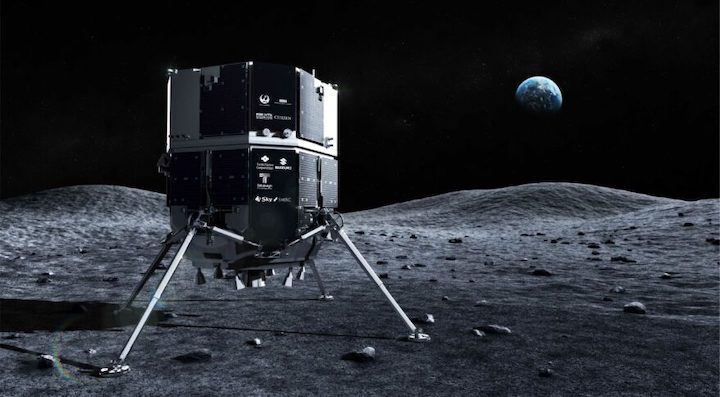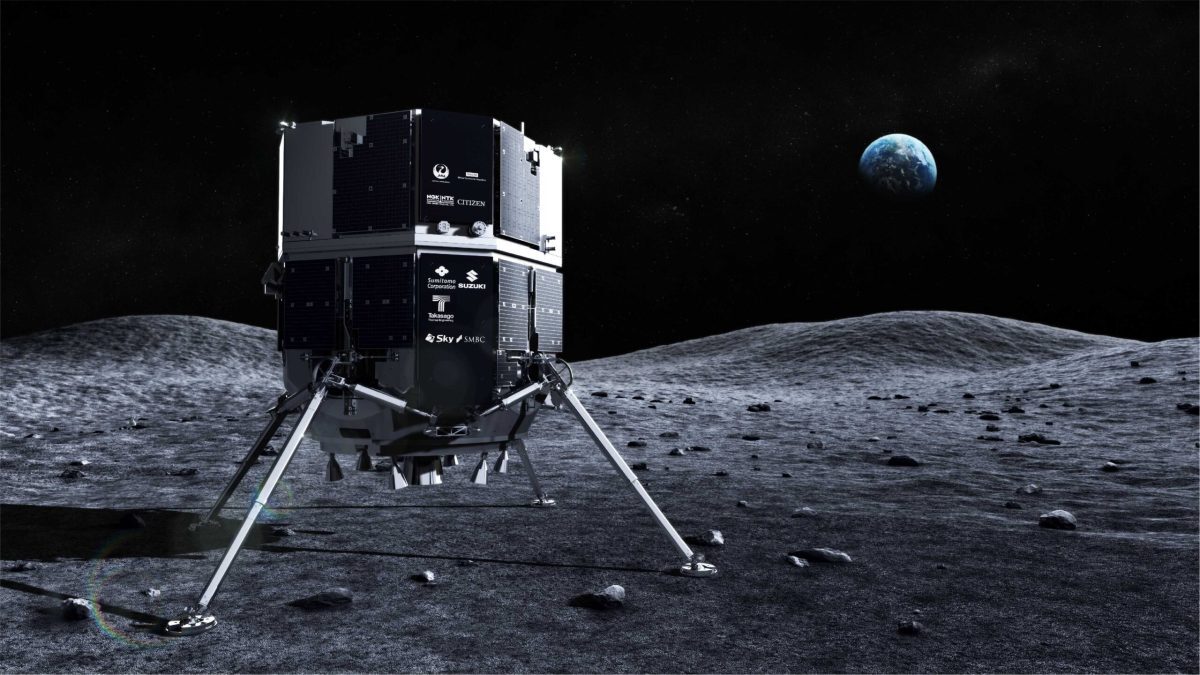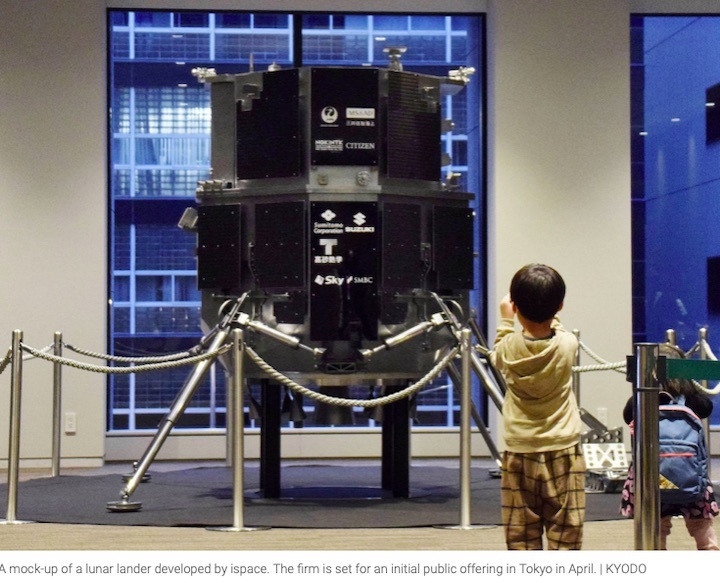24.04.2022

TAMPA, Fla. — Japanese lunar lander developer ispace said April 21 it is negotiating the world’s first insurance coverage for a commercial mission to the moon’s surface.
The startup has signed a Memorandum of Understanding with Mitsui Sumitomo Insurance (MSI), a Tokyo-based firm that started working with ispace in 2019, to insure its first attempt to send a lander to the moon later this year.
The agreement outlines intentions to finalize terms for the insurance in the months leading up to ispace’s Mission 1 (M1), which is currently slated to fly on a Falcon 9 rocket no earlier than the fourth quarter of 2022.
According to ispace, the insurance would cover any damage the lander takes between separating from the rocket in a trans-lunar orbit (TLO) and touching down on the moon.
As well as covering a failed landing, the insurance would guard against issues stemming from radiation exposure as the lander travels through the Van Allen belts to its destination.
The Japanese venture is building a lunar transportation business that sells accommodations on its landers to government and commercial customers.
M1 aims to deliver lunar payloads for the UAE-based Mohammed bin Rashid Space Centre, the Japanese Space Agency JAXA and commercial firms in Japan and Canada.
The insurance package ispace is negotiating with MSI would not cover these payloads.
“As of now, the proposed scheme will cover ispace’s M1 lander,” ispace spokesperson Andrew Ames said.
“However, in the future it may be possible to expand the coverage.”
Ames declined to discuss financial details.
The startup had raised $200 million as of late October, including an investment from Airbus’ venture capital arm.
ArianeGroup, a joint venture between European aerospace giants Airbus and Safran, is supplying components for M1’s propulsion system and supporting integration and tests at facilities in Germany.
The lander’s propulsion system and structural integration are both complete, ispace said April 21, while electrical integration is ongoing as payloads, external sensors and a rover deployment mechanism are installed.
“If all continues according to plan, we aim to begin final testing by early June,” the venture said, when “we will transport our lander from the ArianeGroup GmbH facility in Lampoldshausen to an [German engineering company] IABG facility in Ottobrunn near Munich, Germany.
“At this pace, we plan to ship our lander to Florida by early Autumn for launch preparations.”
The startup expects to become the first privately led Japanese mission to perform a soft landing on the moon.
U.S.-based startup Intuitive Machines is also attempting to send its first lander to the moon this year.
A spokesperson for Intuitive Machines, which until recently had been preparing to launch its IM-1 mission on a SpaceX Falcon 9 in the first quarter of 2022, told SpaceNews April 19 that the venture intends to announce a new launch window “soon.”
Intuitive Machines declined to comment on whether it was looking to insure its mission.
While ispace appears set to become the first commercial company to insure a moon landing, an insurance source said governments have previously secured coverage for lunar missions.
Quelle: SN
----
Update: 2.03.2023
.
First ispace mission on track for April lunar landing

BROOMFIELD, Colo. — Japanese lunar lander developer ispace said Feb. 27 that its first mission remains on track to attempt a landing in two months as it makes progress on its next two missions.
The company’s HAKUTO-R Mission 1 spacecraft launched on a Falcon 9 Dec. 11. The launch placed the spacecraft on a low-energy trajectory that took the spacecraft nearly 1.4 million kilometers from Earth by Jan. 20 before swinging back, and it is currently about 900,000 kilometers away.
In a media briefing, ispace executives said the Mission 1 lander is in good condition ahead of plans to enter orbit around the moon in the latter half of March and attempt a landing in Atlas Crater, located on the edge of Mare Frigoris in the northeastern quadrant of the near side of the moon, around the end of April.
“Our first flight to the moon is going very well,” said Ryo Ujiie, chief technology officer of ispace. That included completing the first 5 of 10 mission milestones, from launch to stable operations in deep space.
“We have been operating our lander as well as expected so far, without any critical issues,” said Takeshi Hakamada, founder and chief executive of ispace. “It does not mean that there have been no challenges.”
Controllers have dealt with several minor problems with the spacecraft, Ujiie explained. That included spacecraft temperatures higher than expected, although still within acceptable ranges, as well as what the company called an “unexpected communication instability” shortly after deployment. One onboard computer has rebooted multiple times, but that has not affected spacecraft operations because of redundant systems.
“We have experienced several anomalies, but we have already solved those issues,” he said.
Flight controllers have also learned about how to manage the spacecraft. “I have been very pleased working with the team and how they have operated under pressure,” he said. “We are gaining extremely valuable experience and leaning a significant amount about ourselves and our lander.”
The Mission 1 lander is scheduled to perform a lunar orbital insertion maneuver in late March, followed by a landing by the end of April. Ujiie declined to give specific dates for either milestone.
While Mission 1 is ongoing, ispace is working on two future missions. The Mission 2 lander, scheduled for launch in 2024, will carry a set of customer payloads as well as a “micro rover” that ispace developed. That rover will collect a regolith sample that will be transferred to NASA under a 2020 contract awarded to ispace’s European subsidiary.
A structural thermal model of the Mission 2 lander is being assembled at a Japan Air Lines facility at Narita International Airport in Japan. That will be followed by construction of portions of the flight model in Germany starting in April.
The Mission 2 lander will be similar in design to Mission 1. “We don’t have any significant differences between Mission 1 and Mission 2,” said Ujiie, noting ispace already incorporated lessons learned from the development of the first lander into the second.
Mission 3 will be developed by ispace U.S., the company’s American subsidiary, supporting Draper, which won a NASA Commercial Lunar Payload Services (CLPS) award for the farside landing mission last July. That Series 2 lander will be larger than the Mission 1 and 2 spacecraft with increased payload capacity and a modular design.
In addition to the NASA CLPS payload, ispace is in discussions with several companies to fly commercial payloads on Mission 3, including AstronetX, ArkEdge Space, Aviv Labs and Cesium Astro. There are no binding contracts yet with those customers, Hakamada said, but argued there was a “strong willingness” to complete such deals. “We look forward to finalizing these service agreements as soon as possible.”
The company is in line to be the first private mission to land on the moon if Mission 1 touches down safely in April. The privately funded Israeli lander Beresheet crashed attempting a landing in 2019. Two American companies, Astrobotic and Intuitive Machines, plan to launch their first lander missions later this spring.
Hakamada said it was a “great honor” to potentially be the first company to land on the moon, but emphasized it was not about just the ongoing mission. “Ispace is not a company to execute only one mission. Ispace is a company to offer a series of missions to answer customers’ continuous demand.”
Quelle: SN
----
Update: 10.03.2023
.
Japan's ispace to list shares in Tokyo ahead of planned moon landing

Japanese startup ispace, aiming to be the first commercial company to land a probe on the moon, announced on Wednesday an initial public offering of its shares.
The first is authorized to list 200 million shares and will debut on the Tokyo Stock Exchange’s growth section on April 12, according to a release from the exchange, which lists the company’s business as lunar development and transportation services.
The public offering will be 24.7 million shares with an overallotment option of another 1.2 million. The Nikkei newspaper said the stock may be priced at ¥244, with the deal valuing the company at ¥19 billion ($138.12 million).
In December the company’s HAKUTO-R Mission 1 lunar lander was launched aboard a SpaceX rocket which took off from Cape Canaveral, Florida, carrying two robotic rovers.
Tokyo-based ispace gave a mission update last month, saying the probe had reached its furthest distance from Earth and was due to touch down on the moon’s surface in late April.
The company has a contract with NASA to ferry payloads to the moon from 2025 and is aiming to build a permanently staffed lunar colony by 2040.
Quelle: The Japan Times

